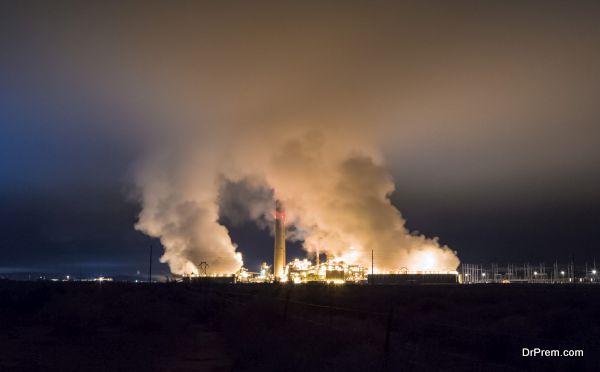Places like manufacturing plants, incinerators, quarries and petrol stations, to name but a few, all have a responsibility to curb their emissions of harmful air pollutants, which are inevitably released into the atmosphere because of different processes. Recent news shows that imposing rules on industries to reduce CFC expulsion, for example, does work; the hole in the ozone layer is now beginning to diminish because of restrictive measures across the board. Nonetheless, this post will show you some methods that these industries use to reduce their waste products.
Industrial Obligation to Control Emissions in Legislation:
- ‘The Clean Air Act 1993 makes it an offence to allow dark smoke to be emitted from any industrial or trade premises, with a fine of up to £20,000.’
- ‘Environmental Protection Act 1990 places a Duty of Care on businesses to ensure that all waste produced is disposed of correctly’
- ‘Industrial Air Pollution is controlled by The Environmental Permitting (England and Wales) Regulations 2010’
A Case Study
By investing in newer systems and processes that produce less CO2 as well as improve upon old methods, industries can at once reduce their emissions, and are able to increase their efficiency. Large car companies, like Jaguar Land Rover for example, have worked to mitigate their environmental damage after legislation by restructuring their manufacturing systems and buildings to cut down on wasted energy. Also, NTPC and Mitsubishi heavy industries joined hands to desulfurize harmful coal emissions.
Again, using Jaguar Land Rover as an example, using alternative forms of energy has a beneficial impact on the environment. By using the largest roof mounted solar panel energy farm in the UK, the plant gets 30% of its energy from renewables. Its carbon footprint has been reduced by ‘24,000 tonnes [of CO2] per year.’
Recycling & Air Treatment

Other methods that industries make use of reduce their waste is by recycling and repurposing their waste as well as treating polluted air with equipment like Regenerative Thermal Oxidisers (RTO).When there is no option to stop or reduce using the fuel, system or process that produces hazardous or pollutant waste, air pollution treatments like the RTO are used heavily. These machines can also effectively treat liquid waste.
There is always more work to be done to reduce waste and emissions emanating from necessary processes that our industries unavoidably undertake. Major companies are already making huge steps in the right direction, paving the way for others to follow in their wake.
Article Submitted By Community Writer





